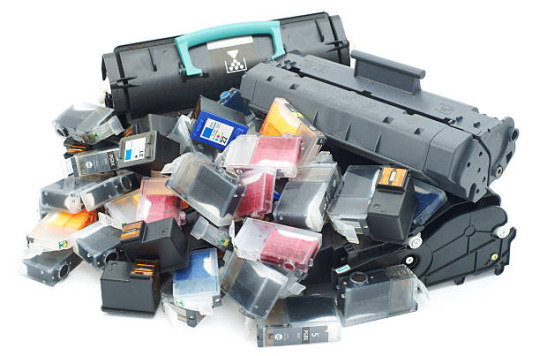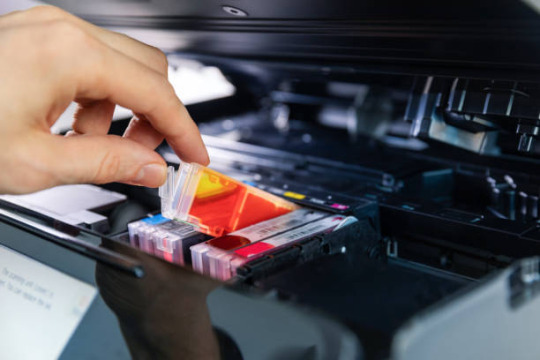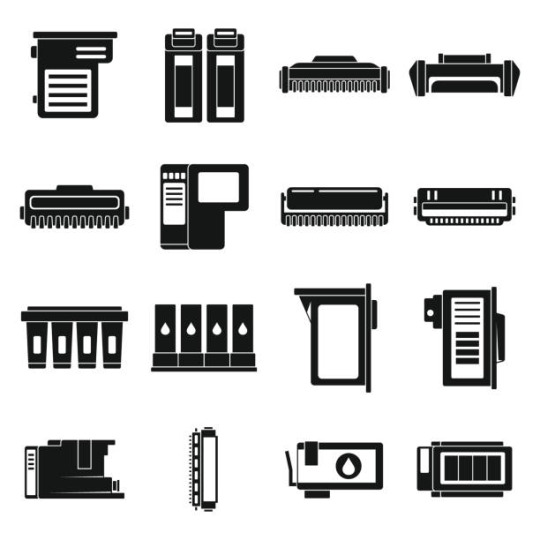Don't wanna be here? Send us removal request.
Text
Brother Laser Toner Mediums Of Print
Okay, so you've heard their names–CMYK, Spot Color, and Simulated Process–however, what are they and how do they utilize Brother laser toner? What sets them apart from one another?
What is the best application for every technique we're about to mention? Well, let us go over each of them from the info found on medium, one at a time.
youtube
CMYK is the oldest color recreation method for print with the use of laser printer cartridges. Screen printing machines can print formats on white or light-colored garments utilizing cyan, magenta, and yellow.
For users competent in CMYK file preparation, Photoshop, and screen production, this is still a viable process of print for light-colored fabrics. The laser Brother toner is not used as much because simulated printing is more dominant.
PROS: It can be printed with plastisol or water-based inks, the soft hand feels, and suggested to be printed damp on damp.
CONS: Need to be knowledgeable on how to separate colors in the proper software application appropriately, minimal garment color choice (white or light-colored garments), requires a much deeper understanding of mesh choice and reproduction of halftone worths, minimal color spectrum–printers will not have the ability to recreate specific colors. If a printer requires a vibrant red, they'll need a bump screen to print that color.
SUGGESTED TOOLS: Use Photoshop to separate colors. Do not utilize a vector program to split, rip software application for the movie output, the Color Profile for inks you're utilizing.

AREA COLOR, WHAT IS IT? Spot color is the most typical print method in the market and has, in some cases, been called the screen printer's best friend. Understanding producing, applying, and dealing with area colors is essential to any screen printer. Logo designs, text, cartoons, line art, and more are all designs area colors excel at replicating.
Spot color designs are typically produced using vector graphics programs such as Adobe Illustrator. Many programs can develop spot colors. Area colors (such as Pantone or customized blended) can be printed as solid shapes at 100% tint or halftones by changing their tint worth away from 100%.
PROS: Brilliant color values, excellent user color control, and clean edges.
CONS: It is traditionally limited to solid color with some halftones and vector illustrations. Spot color does not replicate every kind of print; for example, it doesn't work for photographic styles.
SIMULATED PROCEDURE, WHAT IS IT? A simulated Process is a method utilized to replicate almost any image on the marketplace. It does it via the overlapping and blending of colors in an approach similar to CMYK by using halftones, area tones, and/or PMS colors.

Basically, it's a way of taking an image that historically would have been printed through CMYK; however, it instead utilizes more opaque ink to create a more steady color and production-friendly colorant that can print almost any style for any garment. Designs that are too hard to separate in a vector program, raster images, photos, and intricate tonal illustrations-- are all workable with Simulated Process.
Because of the '90s, Simulated Process has become more popular and commonly accepted since it's much easier to separate, print, and accomplish the best, finished garment compared to CMYK. The simulated process is more steady during production, resulting in fewer misprints. It's the favored separation printing approach.
With any new method, a print supplier should thoroughly investigate the technique and practice it before implementing it in their store. Look online for details. Facebook groups are a terrific place to ask knowledgeable printing machine operators for aid.

YouTube is another excellent platform for more information about the process. If you do not have the capacity to get more details about separations, freelancers concentrating on partitions can assist you.
PROS: High-end, high-detailed artwork, and graphics. Detail capture keeps an enormous level of information (resolution of image and LPI).
Versatility: Print on any garment color due to a white foundation. Fast times of print with potential flashing across all garment types, which you can not do for CMYK printing. Vivid expanded color values due to utilizing specific spot colors to achieve an expanded tonal spectrum.
Significantly broadens the user's capability to service client requirements—functions with water-based colorants, PVC-free, discharge, plastisol inks, and discharge underlay method.
CONS: Whilst the barrier to entry is low; printing craftsmen must educate themselves by finding info online or connecting with screen printing experts and practicing the strategy. It's not ideal for replicating fine text or sharp, vector-like edges.
youtube
SUGGESTED TOOLS: Photoshop or other programs, RIP software and Film Output appliances, devoted dye set for the software application system, PMS mixing system, or close colors. Higher mesh count screens with high consistent stress
Now you know the distinction between CMYK, Spot Colors, and Simulated Process. Each style of printing has its advantages and disadvantages. It is all about what works for you and your shop the best. Experiment with approaches you wonder about and find the best process for you.
2 notes
·
View notes